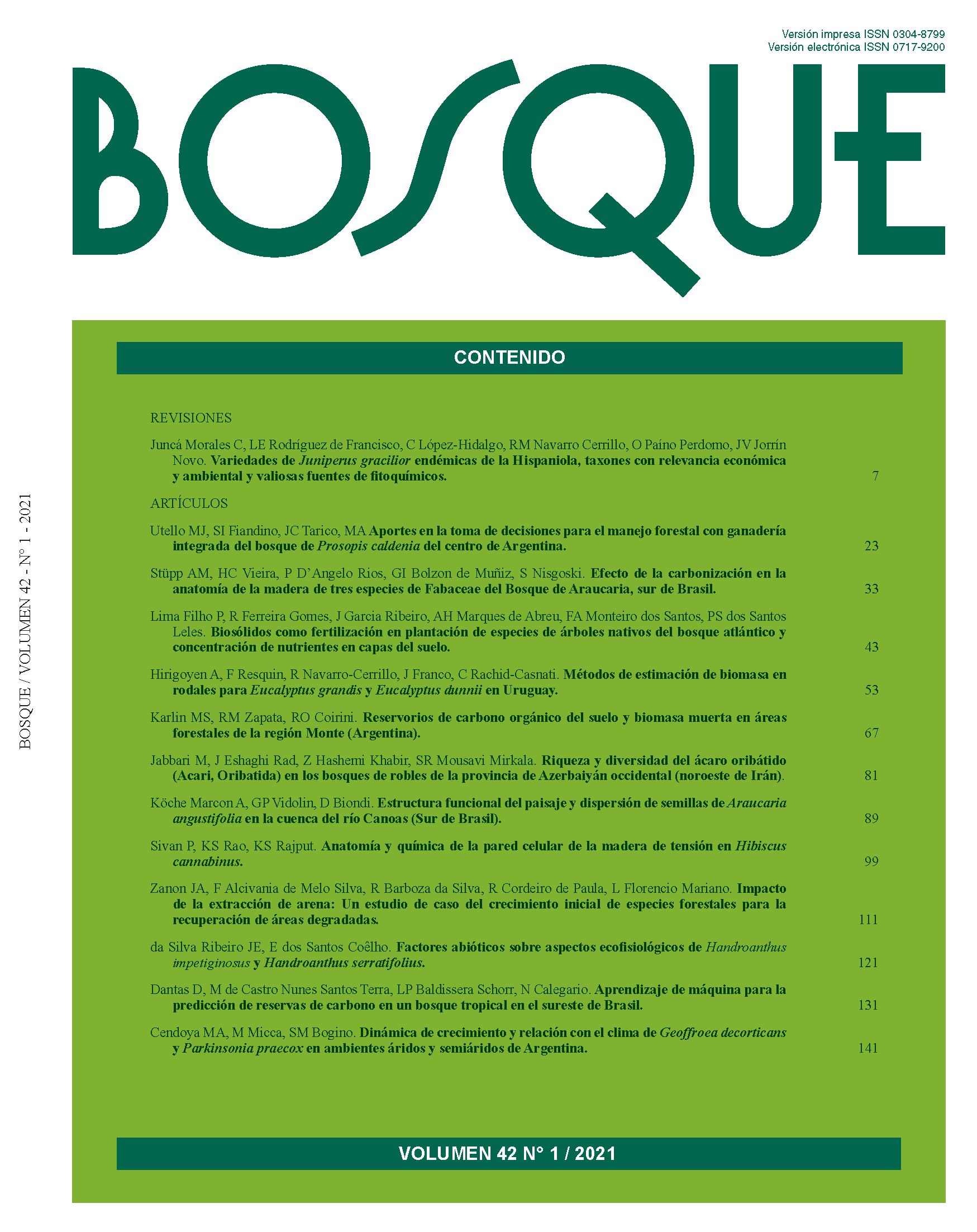Impact of sand mining: A case study of initial growth of forest species for recovery of degraded areas
Conteúdo do artigo principal
Resumo
The Vale do Ribeira region has a large extension of Brazilian Atlantic Forest, and in most cities, low environmental impact activities predominate, such as sand mining. Sand mining has been trying to adapt their industrial activities to low environmental impact, aiming at the protection of permanent preservation areas (PPAs) of riparian forests. The objective of this work was to conduct a case study focused on monitoring and initial growth of forest species by 18 months. This study was performed in a riparian forest site on the Ribeira de Iguape River, Registro, state of São Paulo, Brazil, in a PPA with extraction of river bed sand. Forest species height, stem diameter and mortality index, and rainfall were evaluated in the period. Non-pioneer species accounted for 42.7 % of the forest, while pioneer species accounted for 53.1 %. These proportions are in accordance with local legislation, which establishes a lower limit of 40 % in planting for both groups. Drought periods and leaf-cutting ants at the beginning of growth stages contributed to a higher mortality index and irregular development of some species, however, even during such adversities, forest species indicated resistance to these conditions. Pioneer species had more important development, with emphasis on Senna multijuga, Alchornea triplinervia, Citharexylum myrianthum and Trema micranta, these species must be taken into consideration during the first stages of a project which aims at recovering degraded areas in riparian forests of Atlantic Forest.

